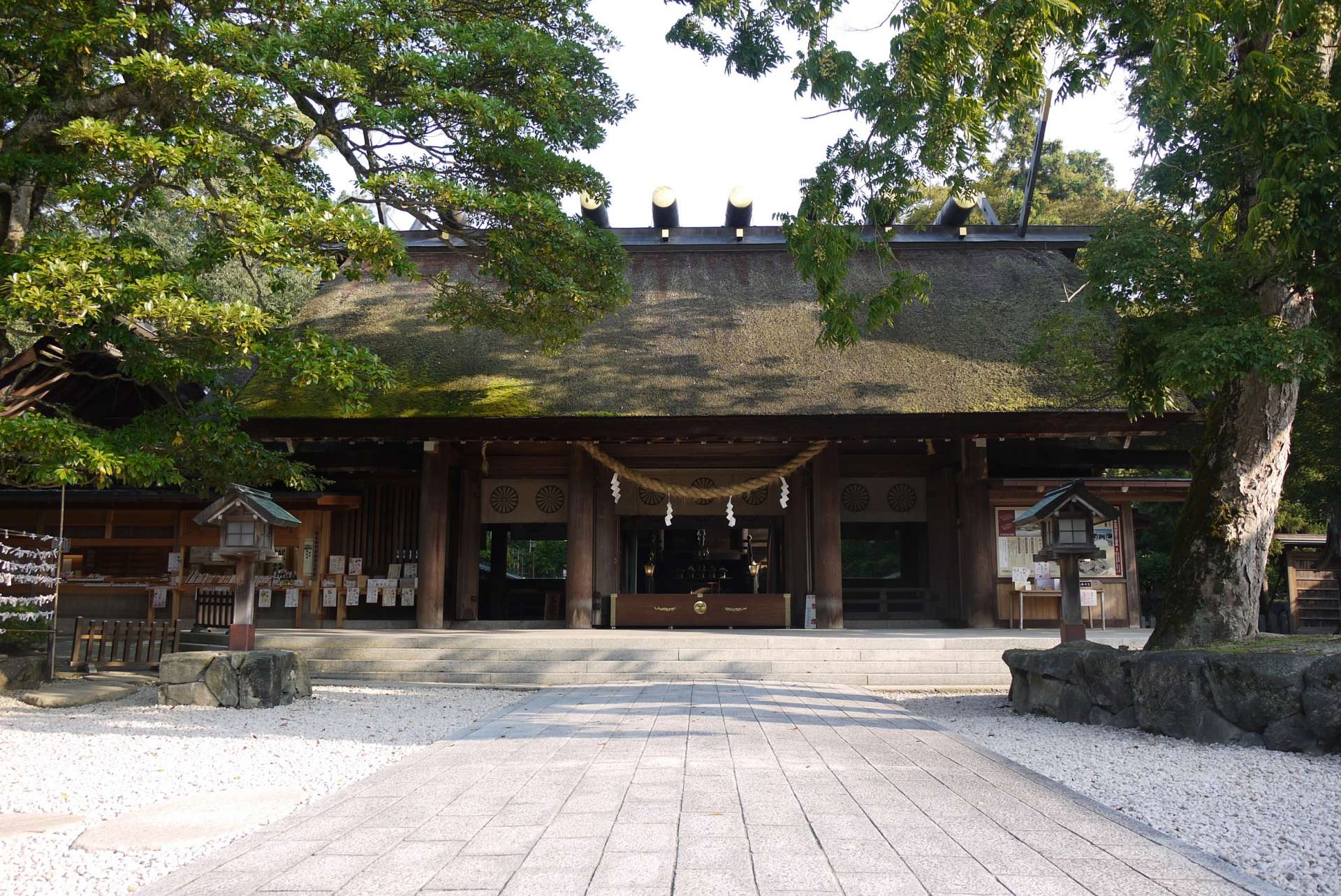2500百多年歷史,氣勢十足的神社。

Verified [Verified] denotes information that has been published with confirmation of its owing parties.
Motoise Kono Shrine
The shrine has been loved as the "home of Oise-sama.
The shrine was called Yosanomiya in ancient times, and Toyouke no Okami was enshrined there long before the Ise Jingu Shrine was built. During the reign of Emperor Sujin, Amaterasu Omikami moved to the shrine from Yamato Province and was worshiped there for four years.
Later, Ise Jingu Shrine was established, and Amaterasu Omikami and Toyouke no Okami were enshrined there, hence it is known as the "home of Oise-sama. Later, the shrine came to worship Hikohoakarinomikoto, who was said to have gone to Ryugu Shrine in a bamboo woven basket boat, and thus became known as "Konomiya" (Shrine of the Basket).
The main shrine, located behind the hall of worship, is built in the Shinmei-zukuri style, the same as the Ise Jingu Shrine. The Aoi Matsuri, which marks the "birth" of a new deity each year, is an April festival said to have continued for 2,500 years. Next to the shrine office is the "garden of birth" where a suikinkutsu (garden ornament and music device) emits cool sounds.
Up the mountain behind the shrine is the Manai Shrine, the inner sanctuary that preserves the history of the Yosanomiya. The iwakura (dwelling place of a deity) of Toyouke no Okami and Amaterasu Omikami and the sacred water of Manai still preserve the history of the shrine since its founding.
Highlights
-
It is recommended to visit Amanohashidate with a set of rented bicycles and boats, which can be used one-way from Amanohashidate.
-
The Ame no Manai water at the entrance of Manai Shrine is sacred water brought from the heavens.
-
The Komainu (stone statue of lion-dogs, shrine's guardian figures) in front of the shrine gate are said to have been made in the Kamakura period (1185-1333) and are a national important cultural property.
-
The five-colored Suetama (five-colored beads) in the Shinmei-zukuri main shrine building is said to be found only here and at Ise Jingu Shrine.
Photos
-
![Ichino-torii (first shrine gate) across the Uji Bridge]()
Ichino-torii (first shrine gate) across the Uji Bridge
-
![The worship hall of Kono Shrine. The main hall with Shinmei-zukuri architecture is located behind this hall.]()
The worship hall of Kono Shrine. The main hall with Shinmei-zukuri architecture is located behind this hall.
-
![Suetama, the five-colored beads in the main shrine]()
Suetama, the five-colored beads in the main shrine
-
![The Manai Shrine's iwakura (dwelling place of a deity) is said to have enshrined deities since the Jomon period.]()
The Manai Shrine's iwakura (dwelling place of a deity) is said to have enshrined deities since the Jomon period.
-
![The Ameno Manai sacred water said to have been brought from the heavens]()
The Ameno Manai sacred water said to have been brought from the heavens
-
![The Iwakura (dwelling place of a deity)]()
The Iwakura (dwelling place of a deity)
Reviews
-
黃秋琴
Details
- Name in Japanese
- 元伊勢籠神社
- Postal Code
- 629-2242
- Address
- 430 Ogaki, Miyazu City, Kyoto
- Telephone
- 0772-27-0006
- Closed
- Open every day
- Hours
- 7:30am-4:30pm (Subject to change depending on the season etc., 9:00am-4:00pm at the shrine office)
- Admission
- Free
- Directions
-
1) From Tantetsu Miyazu Station, take the Tankai bus, get off at "Amanohashidate Motoise Kono Jinja" and walk 3 minutes.
2) Take the Amanohashidate Kanko Boat from the Amanohashidate Pier of Tankai Kotsu, disembark at Ichinomiya Pier, and walk 3 minutes. - Official Website
- Official Website (Japanese)









